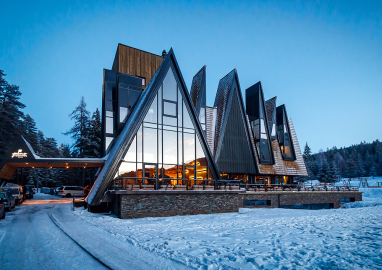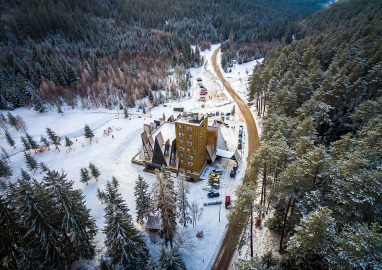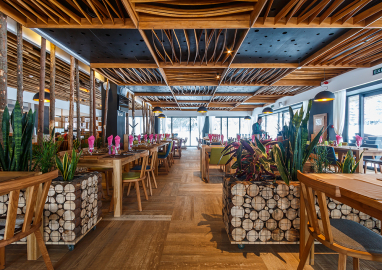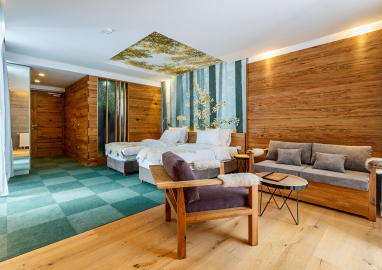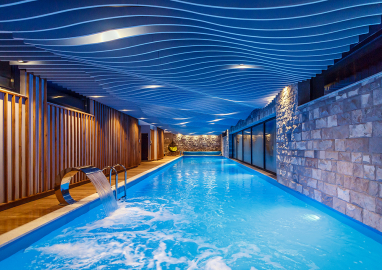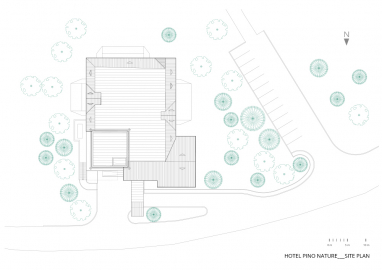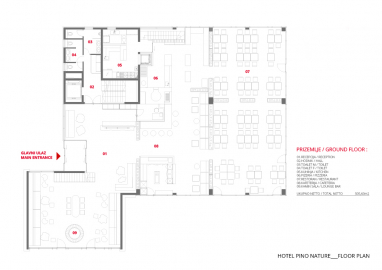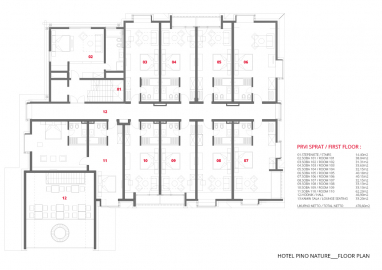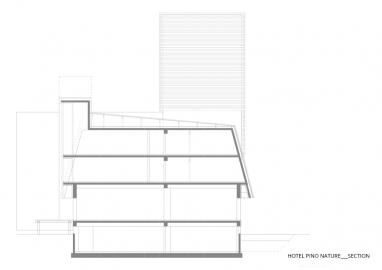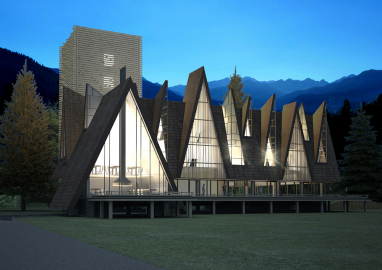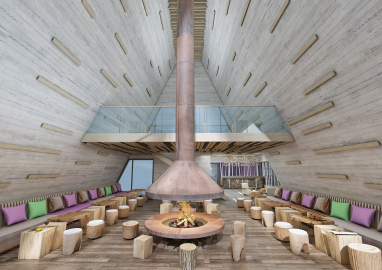Hotel Pino Nature
Hotel Pino is situated on the slopes of Mount Trebević built on the ruins of Sarajevo's hiking resort – Prvi Šumar. The main goal was bringing warmth and intimacy into a large structure. The recipe lies in the subdivision of a large interior into smaller, to human perception appealing but connected sceneries - Intimacy begins in your own corner.
Compositionally speaking, Hotel Pino consists of two bodies: a primary horizontal cube in which public facilities are housed and vertical volume – the tower, which contains exclusively guestrooms. Circulation of guests dominates in the main cube that contains an access point, a spa with swimming pool, conference rooms, kid playrooms and a restaurant. Guest rooms are located along the perimeter of the main building and they receive daylight through the addition of roof spikes. Responsible way of building on a mountain requires adaptation to climate and geographical conditions. Lessons from the local vernacular architectural language were the key inspiration in the form finding of the exterior appearance of the building.
Sarajevo is a longitudinal city, with heterogeneous architecture, surrounded by mountains that have hosted the Winter Olympics in 1984. Alongside the coffee house cult, ubiquitous in public space, there is a tradition of recreation on the surrounding mountains - "the lungs of the city". Main ingredients concerning inspiration for this project are vernacular architecture (common sense of building on a non-forgiving mountain: steep roofs, materiality and experience of vernacular architects), natural geometry of the mountain ambience (steep slopes, cone shape of pine trees), tactility and warmth of a mountain hut.
Steep spikes on the facade are an interpretation of roofs of mountain village houses and the silhouettes of pine trees. The main building volume rests on a stone cladded base – again citing tradition and the tripartite division of the composition of the object - legs / body / head - stone / wood / glass. Wooden shingles, from our previous experiences proved to be sustainable, durable and economical covering material on the mountain. Scratched below the surface, the support structure of the building is made of reinforced concrete - the dualism of these two materials is further interpreted through the interior - warm wooden surfaces communicate with rough, rustic concrete. Previously described tactility of materials goes side by side with the use of photo-wallpaper – the image is still returning to architecture as a scenographic and decorative moment.

